
If pork is “the other white meat,” venison is certainly “the other red meat.” Although often overlooked at the dinner table, venison offers a lean, finely textured and robustly flavored meat with a high iron, protein and vitamin B content. Like the cow, the deer offers numerous front and hind cuts, offering plenty of meaty variety and little need for waste. Keep safety in mind when preparing venison; although rarer deer with internal temperatures of about 145 degrees Fahrenheit has its enthusiasts, venison should reach minimum internal temperatures of 160 degrees to prevent food-borne illness.
Starting at the Top
Once processed, the front quarters of the deer start with the neck, which offers mostly trim meat suitable for making ground venison -- a staple of chili and sausages -- or cutting into thin fillets for jerky. More hearty cuts come from the shoulder of the deer. Shoulder meat often lends itself to stews and chuck roasts. The shorter foreleg of the deer often appears in bone-in cuts, such as the medallions used in venison osso buco. These are all slow-cooking cuts that need temperatures of about 220 to 280 degrees Fahrenheit and long cooking times. These cuts work particularly well roasted or braised.
Succulent Ribs
The front end of the deer's rib cage area lends itself to two different cuts: the rack end of the saddle and the ribs. Rack-end cuts, taken from the top of the saddle near the spine, feature tender, quick-cooking cuts that require lower cooking temperatures than shoulder and foreleg meat. Boneless loins, loin chops and roasts derive from rack end meat, which is also known as the backstrap. The ribs lie below the saddle. Like beef or pork cuts from this region, this meat works well in spare ribs and as trim for making ground venison.
Back in the Saddle
The loin end of the saddle, which spans from the bottom of the ribcage to the start of the rear leg, makes up most of the deer’s hind quarters. A variety of common cuts dishes derive from tender, fast-cooking loin-end cuts, including boneless loins, tenderloin and sirloin. Pan-frying, grilling and roasting typically work well for these types of cuts.
Bringing Up the Rear
The rear leg makes up the hindmost quarters of the deer. The meat known simply as the leg or round spans from the end of the loin-end saddle to the deer's knee joint. Made mostly of tender meat, this versatile region produces cuts such as steaks, roasts, kabob cubes, cutlets and fillets. Below the leg lies the shank, which features meat similar to that of the deer's front quarters. The bulkier shank lends itself to whole shank cuts, but, like the foreleg, it can be cut into bone-in medallions for osso buco.
Related Articles
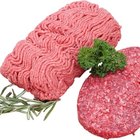
What Cuts of Meat Are Used for Ground ...

Meat Parts of a Lamb
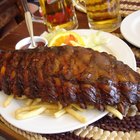
How to Buy the Best Spare Ribs at the ...
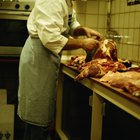
Cuts of Meat From a Front Quarter of ...
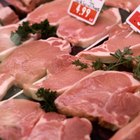
Types of Pork Chops
What Cuts of Beef Come From a Hind?

Which Cuts of Meat Come From the Front ...

What Are Pork Cutlets?

What Is the Difference Between a Prime ...

Different Cuts of Steak

What Is a Chateau Cut?

How to Cook Boneless Country Spare Ribs

How to Cut Up Your Deer Tenderloins

What Is a Rib-Eye Steak?
How to Cook a Standing Rib Roast on a ...

How to Steam Pork Ribs

What Is a Tip Roast?
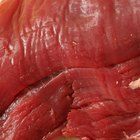
How to Trim and Tie a Beef Tenderloin
How to Cook Buffalo Fillet
Cuts of Meat From a Side of Beef
References
Resources
Writer Bio
With a diverse professional background and a decade of experience as a freelance writer, Dan has contributed lifestyle content -- from fashion to travel to fitness and more -- to publishers including Chron, Fortune, Sony, GlobalPost, ModernMom, Moviefone, Salon.com, Techwalla and dozens of others.
Photo Credits
Tom Brakefield/Stockbyte/Getty Images